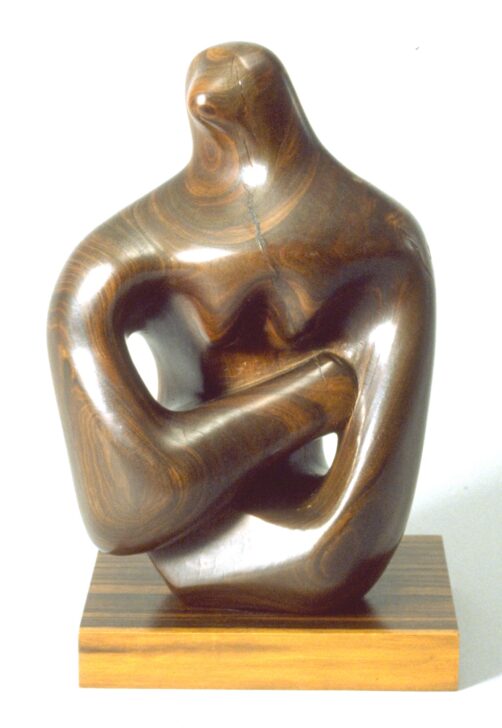Figure
Henry Moore

Description
March 28, 2009
Henry Moore was one of the most successful and recognized sculptors of the twentieth century. He emerged from relative obscurity in the years between the First and Second World Wars and shocked the world with his primitivist style, derived from the non-western art that was fashionable at the time. A scandalized reviewer described one of his figurative sculptures—not unlike this one—as “a monstrosity” unsurpassed in “repulsiveness,” possibly in response to the alien- or insect-like distortions of the human form that resulted from Moore’s growing interest in Surrealism in the 1930s.
Moore, along with his contemporary and colleague Barbara Hepworth, whose work is also on view in this gallery, direct-carved his sculptures: the final form of the work evolved through the process of carving itself rather than following a preconceived model. An important aspect of direct carving was respect for the intrinsic nature of the materials being used. When Moore was asked if he would like the crack in Figure repaired, he replied: “Cracks in wood are a natural occurrence…a crack being a result of natural causes should be considered an intrinsic part of the piece, and left untouched.”
Subject Matter:
This is one of the works in which Moore utilized the direct-carving technique, meaning that the final form of the work evolved through the process of carving itself rather than following a preconceived model. This work highlights organic nature in both subject matter and form. For instance, the crack that runs down the front of the figure is not an accident but the highlighting of the natural phenomenon in the wood. Also, this work is likely a variant on his large mother and child theme; the figure's small breasts suggest a female gendering. Like the natural material, this theme points to Moore's interest in nature and its enigmatic existence.
In the 1930s, Moore was particularly interested in Surrealism and its possibilities for understanding the world. Moore's interplay of limbs and empty space shows his interest in volume, while at the same time they create a kind of monsterous, surreal image of a figure.
Physical Description:
A small carved wood sculpture depicting a torso of a figure with limbs crossed.
Usage Rights:
If you are interested in using an image for a publication, please visit https://umma.umich.edu/request-image/ for more information and to fill out the online Image Rights and Reproductions Request Form.